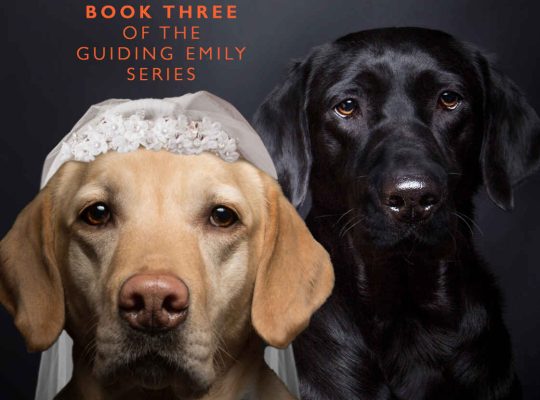
Amongst my favourite additions to the second edition of Pause for Thought: Seeing the World Through the Eyes of a Guide Dog were transcriptions of two interviews I conducted with people involved with the South African Guide Dog Association for the Blind. I wanted to give readers an overview of how guide dogs are raised and how they are trained, which I didn’t do in the original version of the book.
Below is an extract from my interview with Cheryl Robertson, one of the trainers at the Association. During the interview Cheryl tells us about the training of the dogs as well as a whole lot of information about the job of being a guide dog trainer.
Extract from interview:
Lois: Tell us a little about the range of activities you’re involved with as a trainer on a day-to-day basis?
Cheryl: At the South African Guide-Dogs Association we don’t just
train guide dogs. We train guide dogs for visually impaired people, service dogs for physically disabled people, and we train autism support dogs for children with autism. So, we train all three different types of dogs. In Cape Town we only train guide dogs because we are just a satellite centre.Typically, how our day goes when it’s just with the dogs, is to feed them, get them to the toilet, groomed, whatever we need to do to get them ready to work. They’re just like us, they need to eat before they start working.
And then we start with their training. Depending on their level of training, we’ll do obedience-related training, getting them used to the collar response, getting them used to clicker work.
We try to use positive-reinforcement training. It’s about getting them to understand that the correct behaviour will be followed by food.And then once we are on the pavements, it’s to teach them their guide dog responses. It takes a few repetitions for them to learn.
We go to different areas because they need a variety of experiences to understand what is required of them. So, we don’t just take the dog straight from the intake when they come in for training and go straight into a busy environment. We progress to that stage. They start in quite quiet areas and progress to busier areas. They all get about two walks a day, and
we normally break off at lunchtime to rest. The dogs also rest.So, it’s one person per dog. They get taught individually because they learn better like that. In the evening they get their dinner and then most of them will go to their evening homes.
Then we have other duties as well. The Cape Town staff manage the puppy-raising scheme here as well, which is overseeing the puppies that haven’t come into training yet. We will arrange puppy visits, or the puppies have their socialising class. We have
group walks with the older dogs. And then we will also go and see clients who need our help. We try to visit each client once a year, to make sure everything is fine.
I adapted the written transcription from a podcast interview I recorded with Cheryl. If you’d like to hear the audio of the entire interview, you can find it on my podcast feed at the following link: https://iono.fm/e/1507902
If you’d like to read the entire interview, as well as all the other good stuff in Paws for Thought, you can buy your Kindle or paperback version from Amazon at the following link:
https://www.amazon.com/Paws-Thought-second-Seeing-Through-ebook/dp/B0DRTJF95G/





